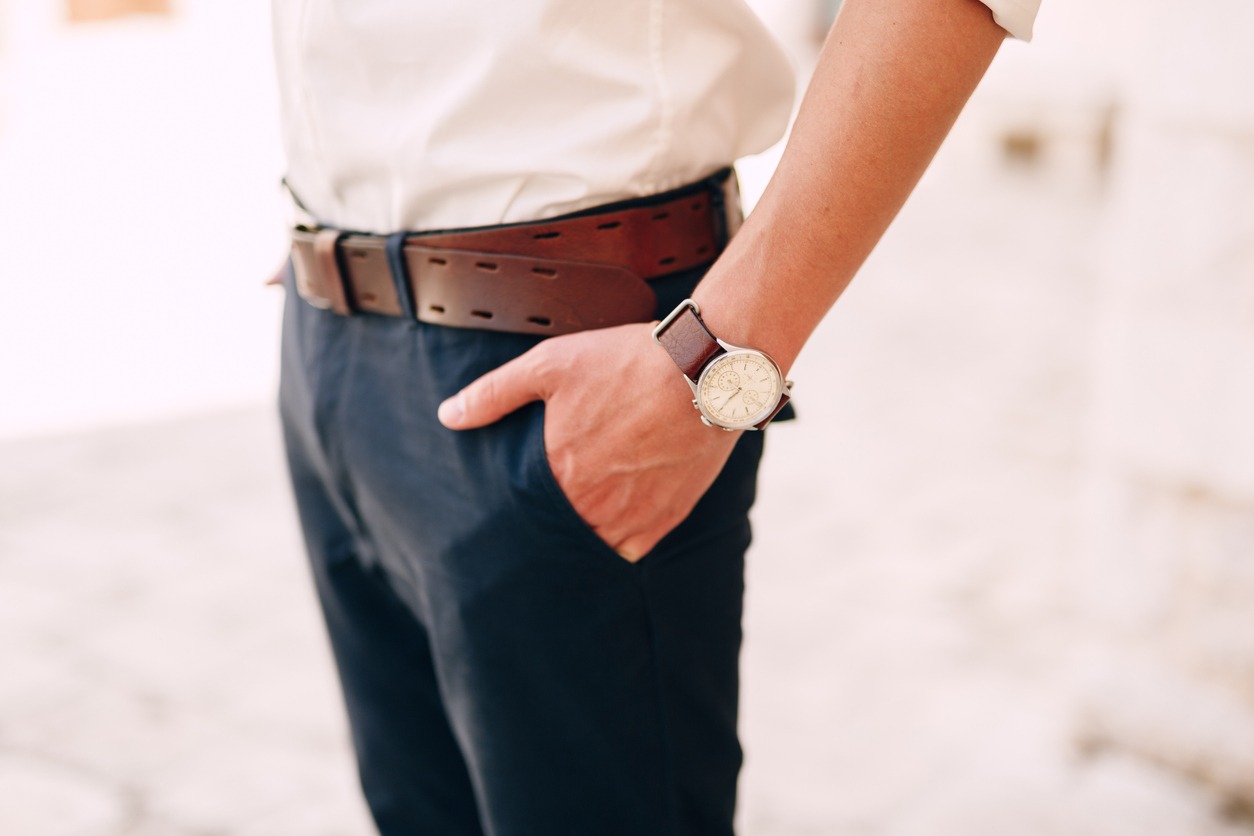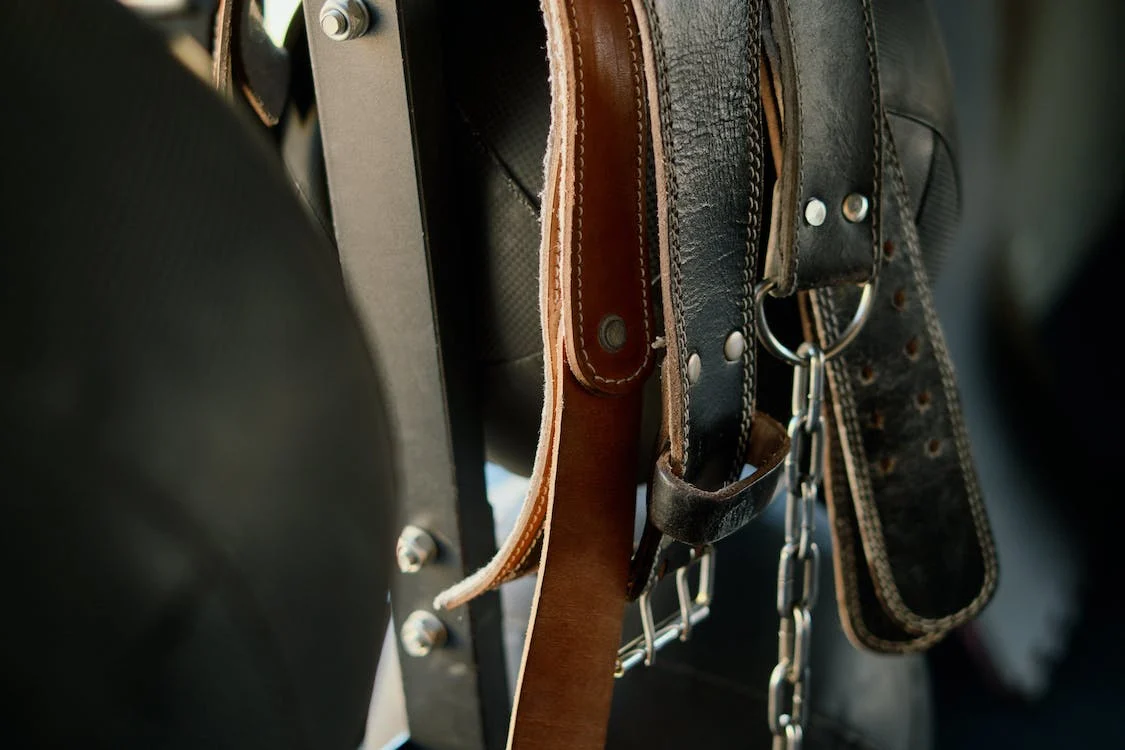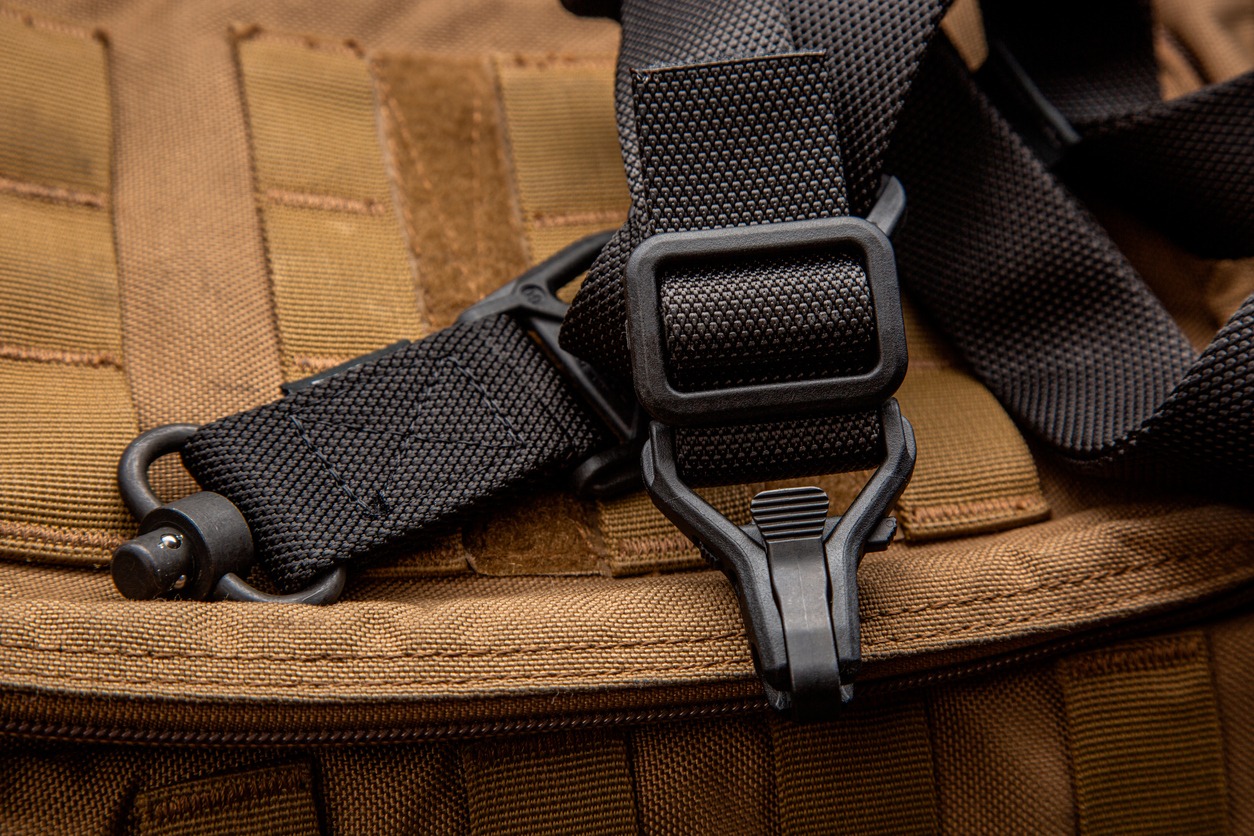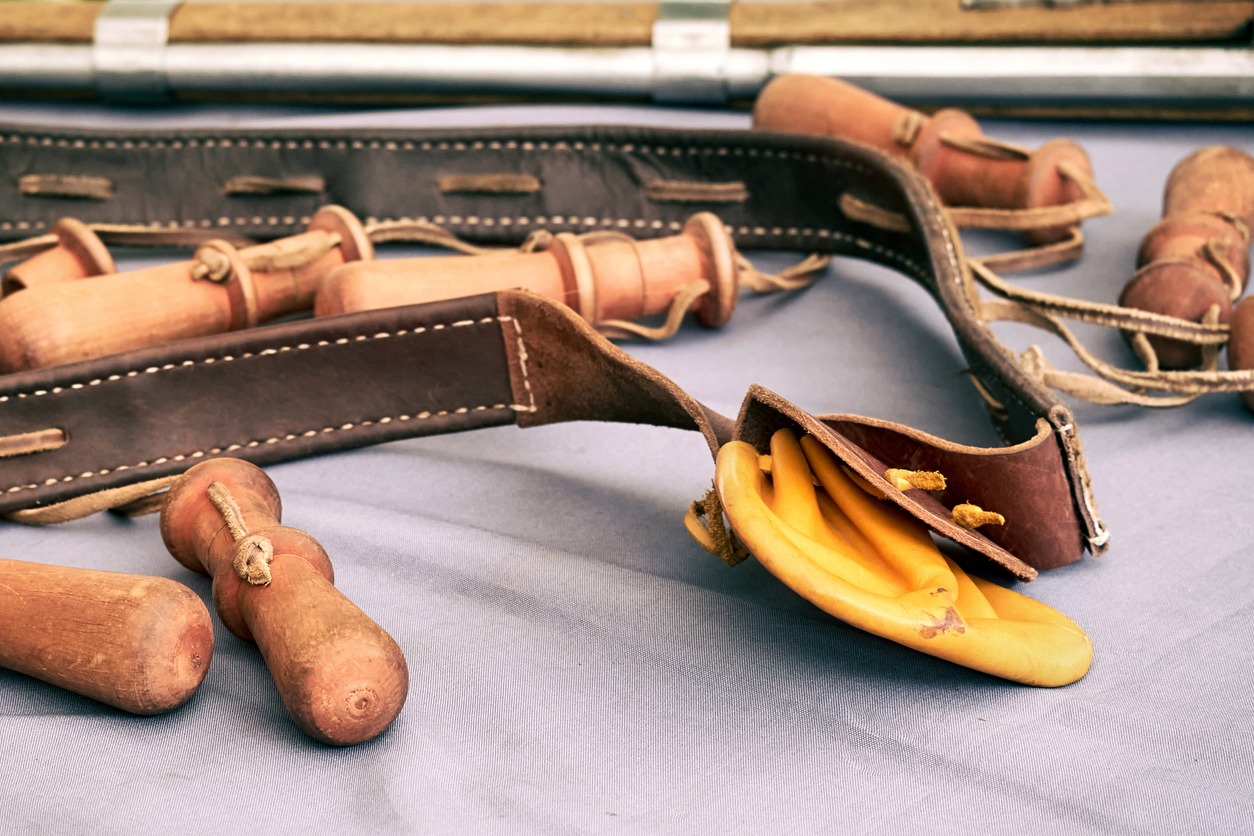Belts are historically used to bind the waist of pants or bottoms. They can be used to hold up pants that are too tight or to tighten the waist of pants that are slightly too loose. Although belts were initially designed to prevent pants from falling down, they are now frequently worn as fashion accessories to bring ensembles together.
Belts can be worn for a variety of fashion purposes, including accessorizing casual ensembles, securing formal pants with suspenders, and for business. If you’re in the market for a new belt for a particular reason, it’s a good idea to educate yourself with the various options available. Here’s a rundown:
1. Casual Belts
Casual belts are made of nylon or another lighter and more durable material than leather. Consider first how far men’s pants have advanced. In place of rigid blue jeans or dress pants, we now have high-tech 4-way stretch chinos that are suitable for running.
Today, pants for both casual and professional use recycled polyester, cotton, elastane, and nylon.
Contemporary yoga pants are breathable and flexible. So why would you pair them with a hard leather belt? That would defeat the objective of the free flow, right?
Casual belts bend more easily and are the ideal accessory for denim, chinos, cotton, and slacks.
Not only is it convenient to click the buckle open and closed when taking a restroom break, but it also gives you the impression of being ready for your next assignment. Even if the task is as simple as acquiring coffee from the cafe down the street, it feels cool.
2. Braided Belts
Braided belts belong under the category of “casual belts,” but have a distinct appearance and texture. Depending on the company, non-leather braided belts may be made of rayon, waxed cotton, nylon, or other materials. All of these materials offer the belt a sporty appearance that will enhance your performance during light physical exercise.
Typically, these belts contain leather embellishments that stand out from the main pattern, giving them a two-tone appearance.
The braided design is stretchy and flexible, as well as aesthetically distinct from other belts.
Non-leather braided belts are perfect for hobbies requiring movement, such as golf, fishing, and sailing. It is a hybrid belt that provides a pleasing aesthetic while also bending and moving with you. These belts frequently complement softer hues such as salmon, lavender, and cool blues.
3. Leather Straps
The leather belt is the earliest item in the game. Black or brown leather is one of those materials with which the world is so familiar that it has become a style benchmark for simplicity and elegance. Avoid combining black pants with a brown belt, just as light brown shoes do not pair well with black dress pants.
4. Dress Belts
Dress belts are typically crafted from premium full-grain leather. They appear and feel much more refined and sturdy than standard leather belts.
They should rest flat against soft formal pants, keep your shirt in place, and coordinate with your color palette. Typically, dress belts are hand-stained and include exquisite, tiny stitching along the edges. Regarding dress belts, less is better. For your formal belt, use a single solid color of nicely cut leather.
The formal belt may receive the least amount of use compared to the other belts in your wardrobe. It is reserved for black tie parties, weddings, funerals, performances and operas, graduations, and other occasions where you are expected to look your best in your most formal apparel.
5. Leather Braided Belts
Braided leather belts can be strategically incorporated with contemporary apparel to lend texture to a formal look. The benefit of braided leather is that the prongue can typically be inserted straight into the tongue through one of the several holes woven throughout the belt.
This allows for modifications without the need for evenly spaced holes.
6. D-Ring Belts
D-ring belts also belong to the “casual” category, but I’ve given this buckle its own area because it’s so darn unique. Belts with D-rings are typically made of canvas or another lightweight material.
D-ring belts often contain less material than buckle belts. The closing mechanism consists of two D-shaped metal rings that the belt tongue slides through. After threading the tongue through both rings, pull them apart and thread the tongue back through them before tightening.
7. Suede Belts
Suede is simply another type of leather, and we’ve discussed leather belts to death. Yes, and we did, but suede has its own aesthetic within the larger category of “leather belts” and merits analysis.
In terms of color and texture, suede is softer than smooth leather belts. Additionally, suede feels softer around the waist and is less stiff than smooth leather.
8. Cummerbund
The term literally translates to “bind the stomach” (Kamar band) in Hindi. It is a broad, waist-covering belt placed over the shirt within tuxedos or single-breasted dinner jackets.
Cummerbunds have pleats facing downward and are worn at the natural waist. This serves as a covering for the abdomen. A cummerbund is not required for all formal suits; for example, a double-breasted suit or one with an inside vest does not require a cummerbund. The cummerbund is typically paired with a bow tie.
9. Military strap
The belt is a thick nylon webbing, and the belt will feature metal hardware like buckles or sturdy plastic buckles. It is also known as an army belt, a webbing belt, a nylon military belt, and a tactical belt.
10. Strap
Straps are the bands of belts, though they are sometimes used without a buckle or a hinge. These straps are composed of a variety of materials.
Straps are the shoulder-carrying belts for your bags and purses. They do not require opening to close, but their length is adjustable.
11. Fastening Belt
Drawstrings, ribbons, and other belts that are primarily used for fastening are referred to as fastening belts. Fastening belts include automobile seat belts and aviation passenger belts.
12. Baldric Belt
Over the shoulder, a Baldric Belt is worn. It features numerous tiny pockets for storing bullets and similar weapons. Armed officers and hunters wear these to carry their firearms.
13. Riggers Buckle Belt
Survival belts utilize rigger buckles because they are so simple to fasten and release while still holding the wearer securely in place.
Rigger buckles are used on belts that are designed to secure the wearer when traveling in helicopters, airplanes, jumping from parachutes, bungee jumping, etc.
14. Shoulder Belts
Shoulder straps are worn around the shoulders. They are more akin to devices that allow you to carry items without using your hands.
15. Furniture Lifter Belts
Furniture lifter belts are more like tools. They enable you to lift heavy objects easily and independently.
To summarize
This article is all about belt types for work. In addition, you can give these belts as gifts to your husband on any occasion to make them look more refined than before.
For more information, you may also read our Guide to Selecting Work Belts.





